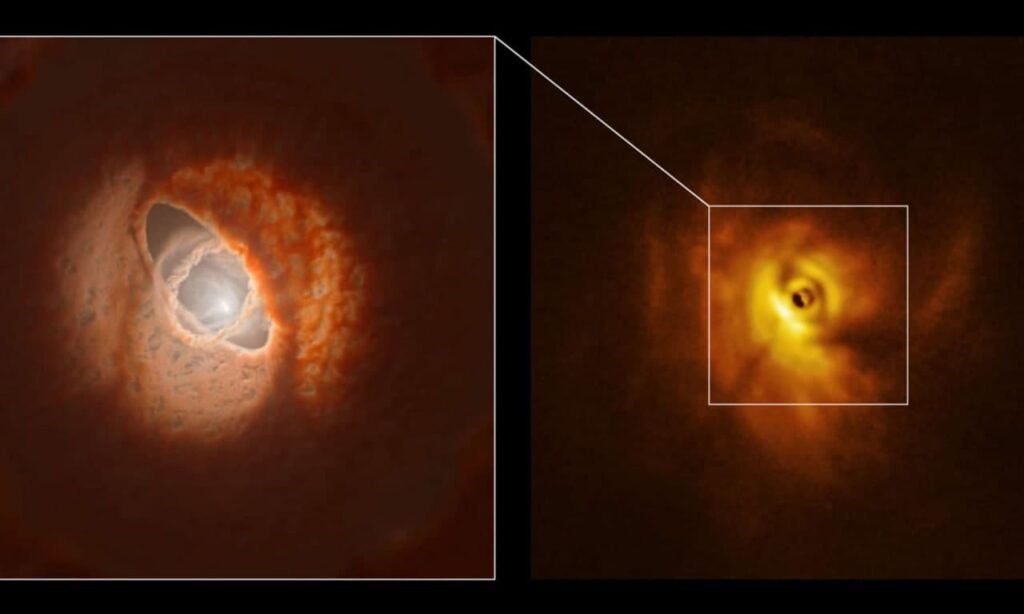A famous constellation named Orion has a system of stars on its tip which can be the place of rare planets in our universe unveils a new study. Scientists have figured out an extremely rare planet that orbits three suns simultaneously and resides in the GW Orionis, 1,300 light-years away from the earth.
Orion has the Hunter which is a three-star system. In its three stars, two nearby orbits each other while the orbit around the pair. These triplets are young and a disk named protoplanetary consists of dust, gas and waste that remain during their formation surrounds them. Because of this disk scientists look closely into the triplet star system as it may disrupt the first known exoplanet orbiting triplet of stars.
The disk around GW Orionis has three concentric rings in which not a single align with the orbit of the three-star system. The innermost also tilted weirdly and wobble as its orbit. The big gap in the disk indicated that some of the material had been waved out.
Researchers continuously trying to explore GW Orionis. A paper also published on September 17 in Monthly Notices of the Royal Astronomical Society briefly says that “So-called circumtriple planets are building inside the disk and have a tendency to orbit all the three stars at a time.”

The gaps in the protoplanetary disk showed that planets are developing themselves within them. As it is building itself, it pulls the dust, in general, the material around it and in such a way clear its surroundings. But this system confused scientists as they are not able to figure whether the strange behaviour of the disk is due to its growth or due to the whirling activity of three stars.
The 3D modelling of three stars showed that those three stars are not able to develop enough torque to clear the area and develop the gap in the disk which is observed. Researchers tell that the gap in the protoplanetary disk seems to be formed due to the development of Jupiter sized there. This can be the first-ever exoplanet orbiting three stars if scientists figured it out completely.
The planets would orbit the system approximately 100 astronomical units (AU, where 1 AU is the average distance between sun and earth). Stars also reside very near to each other. The two closely orbiting pairs have a distance of 1 AU between them while the third one orbits some 8 AU from the centre of the system.
This research hints about the first planet orbiting three stars while scientists further want to trace the strange world. The GW Orion is a complex system and still require more observations as it might unveil the young and different world.
